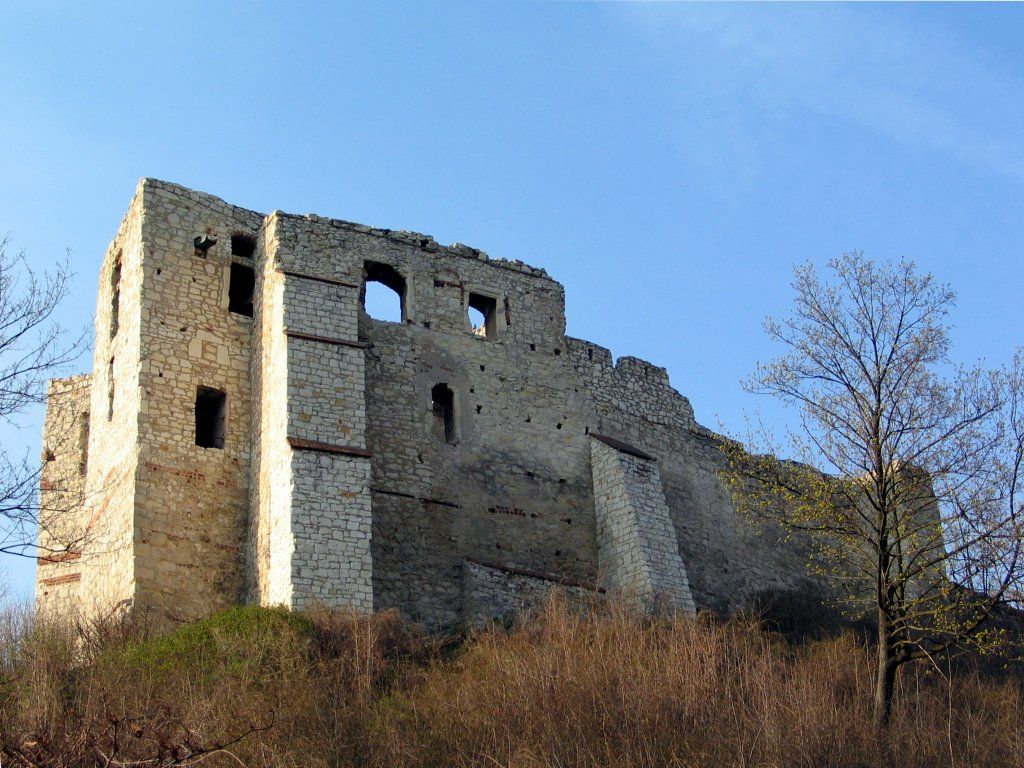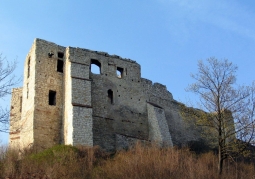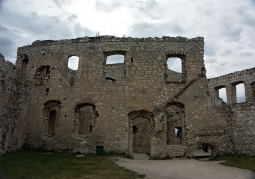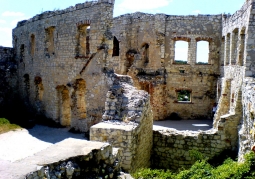Ruins of the Royal Castle - Kazimierz Dolny
No weather data
0.0 /5
Number of ratings: 0
Address: ul. Zamkowa 3 , 24-120 Kazimierz Dolny
The castle in Kazimierz Dolny is a complex of defensive fortifications from the 13th and 14th centuries. The tower, commonly called the upper castle or the Łokietek tower, was built at the turn of the 13th and 14th centuries. There is no agreement as to the purpose of the building. Depending on the source, it is assigned the functions of a prison, a river lighthouse, customs headquarters and even a treasury. The castle was probably built on the order of Casimir the Great in the 1640s. It was, like the Tower, built of limestone that was open to the public. Initially, it had a shape similar to an oval, which was surrounded by two-meter thick perimeter walls with battlements. In the inner courtyard there were probably wooden buildings. In the fifteenth century, the Grotto family managing the castle expanded it, adding a min. a three-storey residential wing from the west, a square residential and defensive tower from the Vistula, an adjacent residential wing and a dry moat. In 1509, Zygmunt I Stary granted the rights to the castle to the Firlej family. Then, thanks to Mikołaj Firlej, a second reconstruction was taking place. At his command, Santi Gucci and Piotr Likiel rebuilt the castle, giving it the style of Italian Renaissance. Min. attic and residential wings were added. In 1655 during the Deluge, the castle was occupied and burned by the Swedish army, and two years later it was largely destroyed by the troops of Prince Rakoczy. In 1663, a great fire broke out in Kazimierz Dolny, consuming most of the city, including the lower castle. At the beginning of the 18th century, during the reign of August II the Strong, plans were made to rebuild the castle in the palace style, but they were thwarted by the civil war with Stanisław Leszczyński. As a result, the castle falls into ruin and is completely abandoned by the end of the century. In 1806, for safety reasons, the Austrian authorities blew up part of the walls with the attic that was threatening to collapse. On March 18, 1831, during the Battle of Kazimierz Dolny of the November Uprising, the castle was defended by the Battalion of Customs Sandomierz Riflemen under the command of Stanisław Krzesimowski. For participating in the uprising of Adam Czartoryski, the castle then belonged to the Czartoryski family, was confiscated and became the property of the treasury of the Polish Kingdom. In the years 1958-1960 archaeological research was conducted in the ruins. The castle was secured in the form of a permanent ruin and made available to tourist traffic.
Komentarze
No results
Nearby places
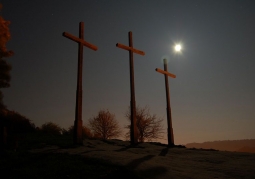
Three Crosses Mountain - Kazimierz Dolny
Category: LookoutsThree crosses referring to Golgotha were erected in 1708. They were to commemorate the many victims of the plague that took place in these areas. The slopes and the summit of the Three Crosses Mountain are covered...
1 km
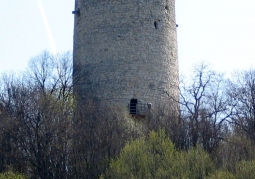
The Elbow Tower - Kazimierz Dolny
Category: LookoutsThe tower, commonly known as the "Tower" or the Tower of the Elbow, was a defensive table built at the turn of the 13th and 14th centuries. It was erected at the height of the Vistula crossing, the so-called Woyszyński...
1 km
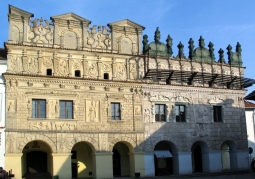
Tenement houses - Kazimierz Dolny
Category: Tenement housesA complex of Renaissance tenement houses from 1615 located on the market square in Kazimierz Dolny. The architecture of these tenements refers to the Italian and Dutch Renaissance buildings. They were probably built by...
1 km
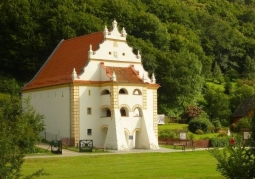
Antique granaries - Kazimierz Dolny
Category: MuseumsGranaries are warehouses in which grain-floated grain was stored. Built from the 16th century from stone (previously wood). The prosperity of the city, which was developing dynamically, grew on trade in this commodity....
1 km
Phone
81 881 07 09
Service prices
Admission to the castle - 3 PLN.
Nearby places

Three Crosses Mountain - Kazimierz Dolny
Category: LookoutsThree crosses referring to Golgotha were erected in 1708. They were to commemorate the many victims of the plague that took place in these areas. The slopes and the summit of the Three Crosses Mountain are covered...
1 km

The Elbow Tower - Kazimierz Dolny
Category: LookoutsThe tower, commonly known as the "Tower" or the Tower of the Elbow, was a defensive table built at the turn of the 13th and 14th centuries. It was erected at the height of the Vistula crossing, the so-called Woyszyński...
1 km

Tenement houses - Kazimierz Dolny
Category: Tenement housesA complex of Renaissance tenement houses from 1615 located on the market square in Kazimierz Dolny. The architecture of these tenements refers to the Italian and Dutch Renaissance buildings. They were probably built by...
1 km

Antique granaries - Kazimierz Dolny
Category: MuseumsGranaries are warehouses in which grain-floated grain was stored. Built from the 16th century from stone (previously wood). The prosperity of the city, which was developing dynamically, grew on trade in this commodity....
1 km
